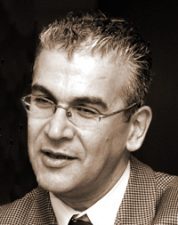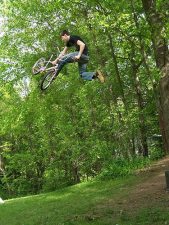Roasting in the summer, freezing in the winter? Welcome to life in my Jerusalem apartment, and thousands of others like it. But if buildings are built according to environmental and climatic principles, it doesn’t have to be that way.
“Jerusalem has virtually the perfect temperature for houses,” explained green architecture consultant, Valentina Nelin when I met her recently. “If your house is oriented correctly, you don’t have the ‘greenhouse effect’ in the summer [causing houses to absorb excess heat and warm-up].”
Sensible, and often simple, design can make the temperature much more bearable, which is good for people and good for the environment, making air conditioners and gas guzzling heaters – which use 75% of the energy in an average household – redundant for most of the year.
Sadly, most homes in Israel aren’t built like that, but a new development in Jerusalem’s Katamon neighbourhood aims to set a green example. Developer Gideon Neumann and architects Carlos Prus and Dafna Alexandroni have designed the homes to reduce household energy consumption via correct orientation to the sun, good insulation and passive solar heating devices. The 36-unit housing project at 11 Shai Agnon Street is applying for the Israeli “Green Building” Standard 5281 and, if successful, will be the first residential project in the country to gain accreditation. The standard encourages environmentally-sustainable building practices covering energy, water, land and other environmental issues including air quality and the building process.
There are various green building projects in Israel, including individual houses in the north and neighbourhoods in the Negev desert, but this marks one of the first private housing developments to take sustainability seriously. Nelin, who is also working on the Shai Agnon project, describes it as “a high standard of living with a low environmental impact.”
The green roofs which will be planted with vegetation are not just to look pretty, but also to improve thermal insulation. In a unique initiative, wildflowers found on the site have been temporarily moved to Jerusalem Wildflower Sanctuary in Neve Yaakov and will be transplanted in their original home once the building is complete.
Although the concept is rising in popularity (the Israeli chapter of the International Initiative for a Sustainable Built Environment (IISBE) was established in 2000), sustainable “facts on the ground” are still few and far between. A list of worthy examples can be found here, courtesy of the Ministry of Environmental Protection.
:: Jerusalem Post, Green Light for Green Construction.
:: Jerusalem Post, A REAL Viable Solution.
:: Israeli Ministry of Environmental Protection.
:: Hegedus House: Jerusalem’s First Solar Home.




